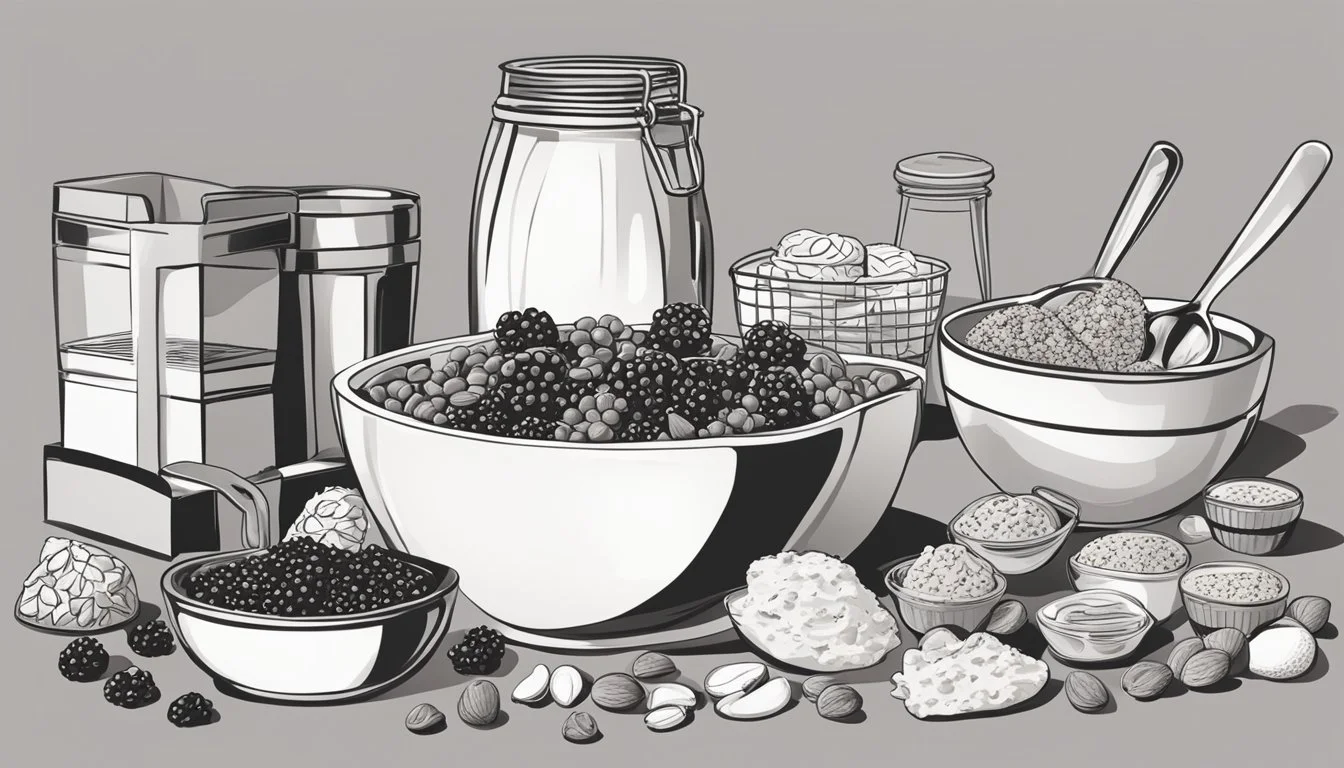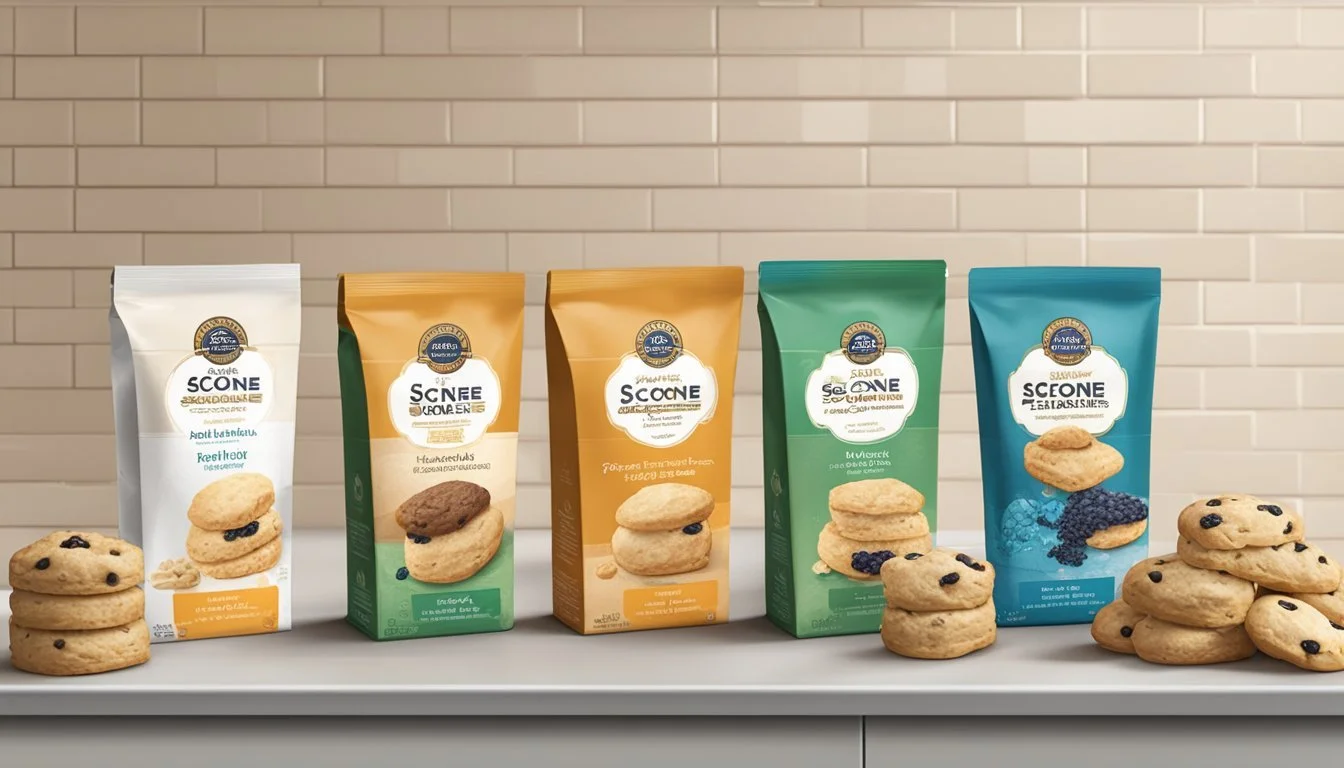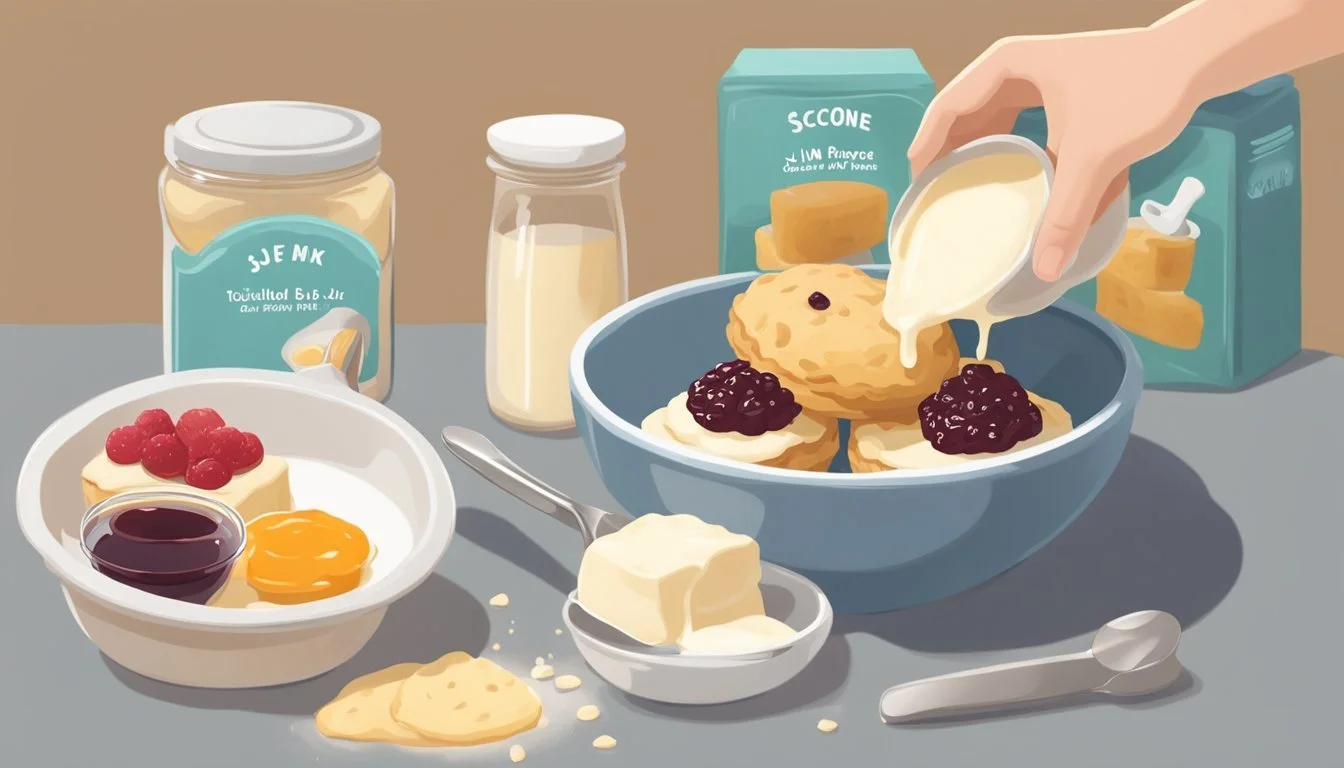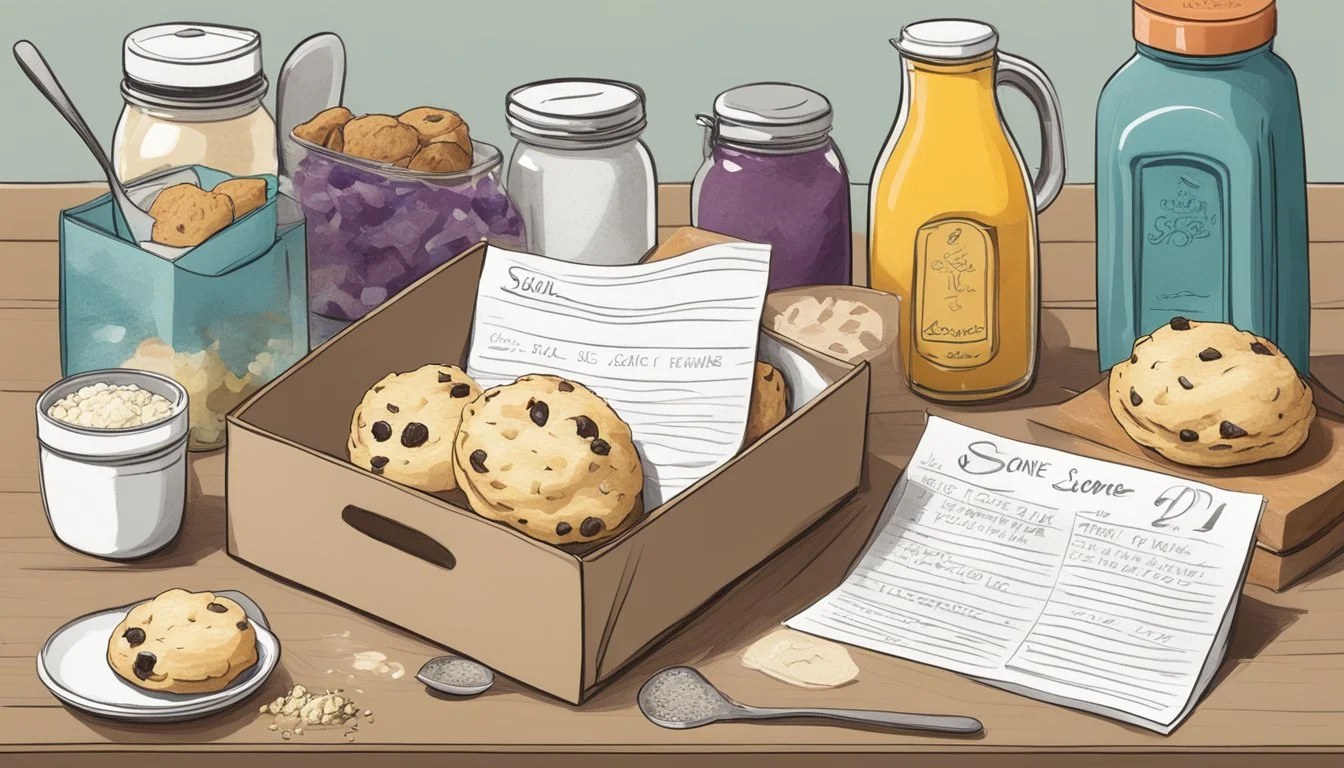Boxed Scone Mix Hacks
Elevate Your Baking Game Effortlessly
Boxed scone mixes provide a convenient foundation for baking, offering a simplified process for those looking to enjoy homemade scones without the hassle of measuring out individual ingredients. Despite the ease of preparation, some baking enthusiasts long for a touch of personalization and enhanced flavor that moves beyond the basic instructions offered on the box. Adapting boxed scone mix with a few inventive tweaks can bridge the gap between convenience and customized taste.
Bakers can elevate their scone mix by incorporating modifications that infuse richness and depth into the finished product. Substituting ingredients like water with whole milk or adding pats of quality butter can make a significant difference in the taste and texture of scones. These hacks not only retain the simplicity of using a mix but also open a doorway to a more decadent and satisfying baked treat. Through smart adjustments, the potential of a boxed scone mix is realized, delivering results that might just rival those of traditional recipes.
Essentials of Boxed Scone Mix
When using boxed scone mix, bakers can create delectable pastries with ease. The key is understanding the mix composition, the importance of quality ingredients, and the role fats play in creating the perfect scone texture.
Understanding the Box Mix
Boxed scone mix offers a convenient shortcut by providing the pre-measured dry ingredients necessary for scone baking. Typically, it contains flour, leavening agents, sugar, and flavoring. The user simply needs to add wet ingredients according to the package instructions to create the batter.
Key Ingredients Overview
When working with a boxed scone mix, the quality of both the box mix and any added ingredients is paramount.
Dry Ingredients: Already included in the mix; generally consist of flour, sugar, salt, and baking powder.
Wet Ingredients: Typically added by the baker; often include milk or water, and sometimes eggs or cream.
A quick glance at the pantry shelves will reveal whether there's cake mix instead of scone mix. While both mixes contain similar ingredients, cake mix often has a different ratio and might contain additional emulsifiers and preservatives.
The Role of Fats in Scone Mixes
Fats, such as butter or oil, play a critical role in the texture and flavor of scones.
Function of Fat: It coats the flour proteins and impedes gluten formation, leading to tender scones.
Quality: High-quality butter or premium oils can enhance the richness and taste of the final product.
The mix usually requires the baker to incorporate fat into the dry mix, creating a batter that bakes into a soft yet slightly crumbly scone.
Customizing Your Mix
Optimizing a boxed scone mix involves integrating diverse flavors and textures, while experimenting with spices, extracts, and different wet ingredients to elevate the end product to a more homemade quality.
Incorporating Flavor Additions
Boxed scone mixes offer a neutral base that allows for the inclusion of various flavorings to cater to individual tastes. A splash of vanilla extract can impart a classic warmth, while citrus enthusiasts might prefer the zest of lemon or orange for a tangy twist. Meanwhile, lovers of decadent desserts can add spoons of chocolate cake mix or lemon pudding for a specialized flavor profile.
Mix-Ins for Texture and Taste
Chocolate chips, coconut flakes, or toffee bits add indulgent bursts of flavor and contrasting textures to the scones. Berries and nuts introduce natural sweetness and a satisfying crunch, respectively, enhancing mouthfeel and overall enjoyment.
Suggested proportions:
Chocolate chips: 1/2 cup per box of scone mix
Nuts (walnuts, almonds): 1/3 cup chopped per box of scone mix
Berries (blueberries, raspberries): 1/2 cup per box of scone mix
Creative Use of Spices and Extracts
Invigorate the mix with a unique blend of spices like cinnamon or cardamom. Extracts offer a world of flavors; almond extract brings a nutty essence, maple lends a comforting sweetness, and mint extract introduces a refreshing twist.
Homemade Touches
Subtle changes like using milk or sour cream instead of water enrich the mix with a creamy texture, while substituting butter for oil adds a rich depth of flavor. Incorporating sprinkles or a homemade glaze can transform an ordinary mix into a festive treat.
Wet Ingredient Variations
Adjusting the wet ingredients can notably alter the texture and taste of the scones. Using yogurt can enhance moisture, while maintaining a light, tender crumb. For those who enjoy experimentation, mix in flavored yogurts or sour cream for an enriched result that does not compromise the delicate structure of the scones.
Advanced Baking Techniques
In this section, one will discover how to elevate boxed scone mix using techniques focused on enhancing texture, controlling moisture, and achieving the perfect consistency.
Texture Enhancements for Scones
For a tender crumb, incorporating an egg can make all the difference. While the standard box mix might call for liquid and fat, adding an egg brings structure and richness. One can:
Use whole eggs to add moisture and fat, which contribute to a richer taste and a more tender scone.
Egg whites alone can be used to lighten the scone's texture, making it airier.
Moisture Control Methods
Controlling the moisture in scones ensures they're neither too dry nor too wet. One method is:
Substituting water with other liquids: Replace water with milk or buttermilk to add moisture without compromising flavor.
Ingredient Purpose Milk Increases fat content, improving moisture. Buttermilk Adds acidity, tenderizes the dough.
Adjusting Mix Consistency
The consistency of the scone mix can affect the end result significantly. One can adjust the carrot cake mix as follows:
For a more moist scone, add extra fat such as melted butter or oil.
To achieve a richer flavor, mix in additional egg yolks, which contribute fats that enhance taste and texture.
Use these techniques with confidence to refine scone mix into premium baked goods that defy their boxed origins.
Decorating and Presentation
When presenting your scones, the final touches of frosting and toppings can transform a simple treat into a delightful confection, while thoughtful presentation to guests elevates the entire experience.
Frosting and Toppings
One can achieve remarkable results with homemade frosting by starting with a base of powdered sugar and adding different flavors and foods. A colorful touch is easily obtained with a few drops of food coloring. For variety, one might consider:
A classic vanilla glaze: Mix powdered sugar, milk, and vanilla extract until smooth.
Lemon zest frosting: Incorporate fresh lemon zest into your glaze for a citrus kick.
For added texture and taste, sprinkle the tops with candy, chopped nuts, or coarse sugar before baking.
Serving Suggestions for Guests
The presentation of scones should be as delightful as their taste, especially when entertaining guests. Consider the following tips:
Serve on a cake stand for an appealing vertical display.
Pairing with the right beverage—such as a strong black tea or a creamy latte—complements the flavors and elevates the overall experience.
Offer an assortment of toppings such as clotted cream, honey, or fruit preserves, allowing guests to customize their scone.
Specific Mix Variations
Experimenting with boxed scone mix can lead to delightful variations. By incorporating simple add-ins like chocolate cake mix for a sweet treat, or lemon zest for a citrus twist, one can enhance the flavor profile of their scones. For savory options, a few ingredient tweaks can create a wholly different scone experience.
Making Boxed Chocolate Scones
One can transform a simple boxed scone mix into chocolate scones by adding half a cup of chocolate cake mix, such as Duncan Hines, to the dry ingredients before mixing. This not only imparts a rich chocolate flavor but also adds a subtle sweetness to the scones.
Lemon and Citrus Scone Hacks
To infuse a burst of citrus, one should add the zest of one lemon to the dry ingredients for a fresh flavor. For a more intense lemon taste, incorporating lemon pudding mix into the scone batter ensures each bite is packed with lemony goodness.
Savory Scone Mix Modifications
For savory scones, chefs recommend adding grated cheese and a pinch of herbs to the mix. It's advisable to omit any sugar or sweet ingredients listed in the original boxed mix recipe to maintain the savory profile.
Accompanying Recipes
When enhancing the experience of enjoying scones made from boxed mix, one can complement them with side dishes and beverages that harmonize flavors and textures. These combinations can elevate a simple brunch and offer a well-rounded treat for the palate.
Complementary Side Dishes
Boxed scone mixes offer a convenient foundation for a delightful brunch spread. A well-chosen side dish can turn a scone from a snack into a meal. Here are a few options:
Traditional Clotted Cream: This rich, creamy spread is a classic pairing with scones.
Preserves: Layer flavors by serving a variety of preserves, from raspberry to apricot, adding a sweet and fruity note.
Fresh Fruit Salad: Combine seasonal fruits for a fresh, light accompaniment that balances the richness of the scones.
Beverage Pairings
The beverages served alongside scones can greatly influence the overall tasting experience. Here are some pairing ideas:
Beverage Type Description Coffee A robust coffee pairs well, cutting through the scones' sweetness and richness. Tea Classic black tea, either plain or with a splash of milk, complements the tender crumb of a scone. Milk Cold milk is a simple, soothing choice, especially for children or those who prefer non-caffeinated options.
These pairings will ensure the scones are not just a treat, but a centerpiece of a sophisticated and enjoyable culinary experience.
Convenience and Shortcuts
Boxed scone mixes offer a great way to save time while still enjoying homemade baked goods. Utilizing a few simple hacks can lead to delicious results without extensive preparation or baking time.
Quick Preparation Tips
Instant Pudding Mix: For a moister scone, one can incorporate a small box of instant pudding mix into the dry scone mix. This not only adds flavor but also enhances the texture of the scones.
Simple Syrup: Brushing the tops of scones with simple syrup immediately after baking can impart a sweet sheen and keep them moist. This step takes seconds and adds a professional, delectable touch.
Time-Saving Baking Tools
Silicone Baking Mats: Placing scones on silicone baking mats can reduce clean-up time and eliminate the need for greasing trays or using parchment paper.
Cookie Scoops: To quickly portion the scone dough, use a cookie scoop for uniform size, which ensures even baking across all pieces.
Common Mistakes and Solutions
When baking with boxed scone mix, bakers may encounter issues such as uneven texture or undesirable consistency. This section provides targeted advice for troubleshooting the mix and preventing common errors to help ensure a perfect batch every time.
Troubleshooting the Mix
If bakers find their scones are not turning out as expected, there are several adjustments they can make. One key issue is overmixing the dough, which can activate the gluten excessively and lead to tough scones. To avoid this, they should mix the dough until it just comes together, no more. Bakers should also be cautious of too many lumps in the mix; gentle folding can help to keep the mix just right without overworking it.
Preventing Common Errors
To prevent common baking missteps, bakers should ensure they are using cold, unsalted butter if the recipe calls for it. The temperature of the butter is crucial because it affects the texture and rise of the scones. Here's a quick checklist to help bakers avoid common pitfalls:
Temperature: Always use cold ingredients, particularly butter, to prevent the mix from becoming greasy.
Mixing: Avoid shame and frustration by mixing the dough just until the ingredients are combined to prevent overworking.
Butter: Unsalted butter is generally recommended for baking to control the sodium content and for its fresh taste, ensuring you don’t overshadow the flavors of your scones.
Following these tips and paying close attention to the mixing process and the quality of ingredients used, bakers can greatly improve their scone-making experience and outcomes.
Health and Dietary Adaptations
Boxed scone mixes offer a convenient baking solution, but health and dietary needs sometimes require adaptations. This section provides tailored modifications to accommodate low-fat, dairy-free, gluten-free, and vegan diets without sacrificing flavor or texture.
Low-Fat and Dairy-Free Options
For those watching their fat intake or who are dairy-free, traditional boxed scone mixes can be adjusted. Instead of using whole milk or buttermilk, individuals can opt for low-fat or fat-free milk. Almond milk, soy milk, or oat milk are excellent dairy-free substitutes that offer a similar consistency. To reduce fat further, one can also:
Replace butter with applesauce or mashed banana for moisture.
Choose light or dairy-free margarine as an alternative to butter.
Gluten-Free and Vegan Variations
Navigating gluten-free and vegan diets requires specific substitutions. A gluten-free scone mix serves as the perfect base for these adaptations. For vegan diets, replacing animal products is essential:
Substitute regular milk with a gluten-free, plant-based milk such as rice or coconut milk.
Use vegan butter or coconut oil in place of traditional butter.
To replicate the binding properties of eggs, try flaxseed meal or chia seeds soaked in water.
Ingredient to Replace Traditional Option Gluten-Free/Vegan Substitution Milk/Buttermilk Whole Milk Plant-based milk (rice, coconut) Butter Regular Butter Vegan butter, Coconut oil Eggs Eggs Flaxseed meal or Chia seeds (soaked)
By making these modifications, individuals with various dietary restrictions can still enjoy the pleasure of freshly baked scones.
Storage and Freshness
Maximizing the shelf life and maintaining the structure of scones ensures lasting freshness. Proper storage techniques can significantly extend the enjoyment of these baked goods.
Extending Shelf Life
To extend the shelf life of scones made from boxed mixes, individuals should adhere to the following storage methods:
Refrigeration: Scones keep for up to 1 week when refrigerated in an airtight container.
Freezing: For longer storage, fresh scones can be frozen, lasting up to 3 months. It's crucial to store them in airtight containers or heavy-duty freezer wraps to preserve their quality.
When adding fresh fruit to scone mix, they should consume it more promptly due to the fruit's moisture, which can shorten the shelf life.
Reheating and Freshening Leftovers
To freshen leftover scones and restore their original warmth and texture, follow these steps:
Oven: Preheat to 350°F and heat scones for about 10 minutes.
Microwave: Place a damp paper towel with the scones for 20-30 seconds on a high setting.
One must avoid over-reheating as it can compromise the scones' structure, causing them to become too dry or tough.
Creative Leftover Ideas
Boxed scone mix is versatile, and one should not limit its use to just traditional scones. With a few additional ingredients, a creative cook can transform leftover scone mix into delightful new treats or use it as a base for other desserts.
Turning Leftovers into a New Treat
Scone French Toast: Instead of discarding stale scones, a person can easily repurpose them into scone French toast. One should soak the leftovers in the standard egg mixture and then fry them on a buttered skillet until golden brown.
Scones-to-Cookies Transformation: By adding a bit more sugar and some extra butter, one can transform scone mix into cookie dough. Baking times will vary, but a typical guideline would be until they are lightly golden.
Scone Mix as a Base for Other Desserts
Waffles or Pancakes: One can use leftover scone mix to make waffles or pancakes by just adding a bit more liquid to thin the batter. This results in a rich, cakey texture, distinct from regular waffles or pancakes.
Cake or Cupcakes: By mixing in an additional egg, some oil, and increasing the milk quantity, scone mix can become a quick cake or cupcake batter. It's advisable to bake at 350°F until a toothpick inserted comes out clean.
Dump Cake Hack: For an effortless dessert, one can sprinkle scone mix over fruit in a baking dish, adding slices of butter on top, and bake it. As it cooks, it creates a cakey topping over the fruit, known as a dump cake.
Brownie Texture Twist: To achieve a brownie-like texture, one might mix a smaller portion of liquid into the scone mix and incorporate chunks of chocolate before baking.
By using these creative methods, home cooks can ensure that no scone mix goes to waste, simultaneously exploring new dessert horizons with minimal effort.
Frequently Asked Questions
When using boxed scone mix, several questions commonly arise. This section aims to address these queries, providing precise hacks and modifications to enhance your scone-baking experience.
Answering Common Queries
Can I make my boxed scone mix taste homemade?
Yes. One can add additional ingredients such as a teaspoon of vanilla extract or a pinch of cinnamon to give the mix a homemade flavor.How can I ensure my scones are moist?
Integrating a tablespoon of sour cream or yogurt into the dough can significantly improve moisture.What's the secret to a golden crust on scones?
High heat is crucial. Bake at 400°F - 425°F for that perfect crispy exterior.How do I make my scones rise higher?
Avoid overworking the dough, and make sure your leavening agents are fresh.Can frozen butter improve my boxed mix scones?
Absolutely. Grating frozen butter into the mix before baking enhances texture.Is it possible to bake scones from frozen state?
Scones can be baked from frozen by simply allowing them to sit at room temperature for 20 minutes, then baking as per the recipe instructions.How can I refresh already baked scones?
Reheat them in an oven at 325°F for 10 minutes to restore freshness.
By addressing these FAQs with clear, knowledgeable guidance, bakers at all levels can enhance the quality and flavor of their boxed scone mix creations.









